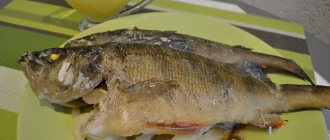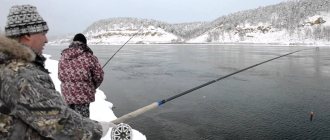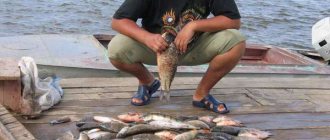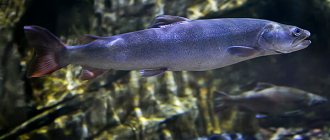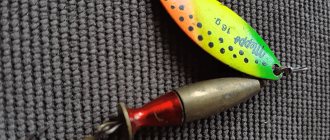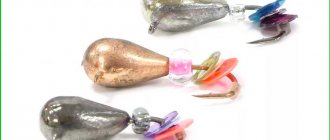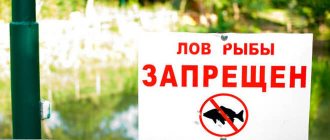Fishing is an activity that has fascinated the male half of the population since ancient times.
True, now most fishermen do this more out of sporting interest than for food purposes. To ensure that your pleasant time is not overshadowed by showdowns with Rosrybolovstvo inspectors, you need to know about the prohibitions regulating fishing for the season.
Legislative framework
Industrial fishing in Russia is regulated by separate rules and requires obtaining a license, but we will look at the rules regarding individual fishing. The main law regulating this type of activity is Federal Law No. 166 “On fishing and conservation of aquatic biological resources.” Art. 24 contains the main provisions “On amateur and sport fishing”, and Art. 26 – fishing restrictions.
In addition to federal regulations, there is also local regulation - this is Order of the Ministry of Agriculture No. 453 “On approval of fishing rules for the Volga-Caspian fishery basin” and several other orders for water basins of the Russian Federation, regulating the territorial division of the country’s water resources and establishing general rules and prohibitions. Territorial units are regulated in detail by local by-laws - acts of the Ministry of Agriculture for districts and regions.
General rules and restrictions
Norms limiting fishing are introduced not because of the “whims” of the legislator, but in order to preserve the population of all species living in Russia. Therefore, if you want our descendants to be able not only to study fish breeds from textbooks, but also to catch them on their own, you should familiarize yourself with the rules in force in your region and adhere to them. They are regulated by the above-mentioned Order of the Ministry of Agriculture No. 453 and similar territorial orders. General restrictions include (Chapter 5 of the Order):
- prohibition of fishing in certain ways (lighting, hooking, jamming, using electric fishing rods, etc.);
- catching certain types of fish (sterlet, salmon, perch, etc. - depending on the region);
- catching inhabitants of water resources smaller than those specified in the relevant annexes (if the size is smaller, the caught specimen must be released back into the water with minimal damage);
- fishing in places that are objects of environmental protection: fish factories, nature reserves, dams, hydroelectric power stations, fish farms, spawning grounds, etc.);
- catch exceeding the limited value (the average permitted value in Russia is 5 kg per person);
- fishing of biological resources during the periods determined by the Orders of the Ministry of Agriculture: the time of spawning (reproduction) of fish, which have their own time limits for each species. For most species, spawning takes place in the spring - from March to July, depending on the location. But some species breed in winter (for example, pike).
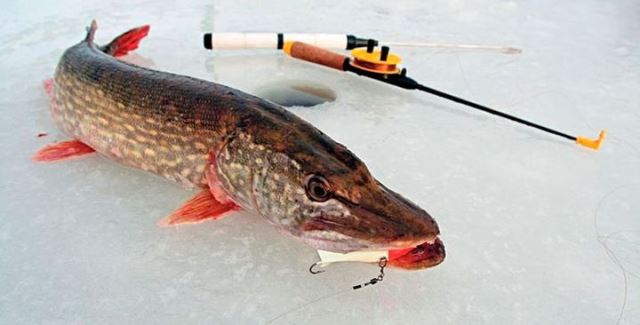
What kind of fish is taimen?
The genus-forming taxa is the Siberian or common taimen (Hucho taimen), which is also known by the common nicknames “krasulya”, “laziness”, “talmen”. It is characterized by the largest dimensions among all salmon and the complete absence of the hypoosmotic mechanism necessary for a safe stay at sea. In addition to the ordinary one, experts distinguish Korean (Ishikawae), Sichuan (Bleekeri) and Mityagin forms. Another famous representative of the genus is the Danube salmon (Hucho hucho).
The species is one of the largest freshwater predators and, under optimal conditions, can live for more than 60 years. In standard catches, young 6-7 year old individuals (55-70 cm) weighing 3.5-5 kg prevail. Adult fish grow faster; meter-long ten-year-olds have a mass of 12 kg. At 20 years of age, the length of the predator is 120-125 cm (25-30 kg). But these figures are far from the maximum - the largest taimen weighed 105 kg with a height of 210 cm (1943, Kotui River, Krasnoyarsk Territory).
Appearance description
The slender and elongated shape of the body has much in common with the structure of trout and has ideal streamlining parameters that contribute to rapid movement in the water. Other features of the appearance of taimen include:
- fins shifted towards the tail;
- large flattened head;
- small scales (140-150 in the lateral line);
- a huge terminal mouth with sharp teeth curved inward (two rows);
- 11-13 gill rakers;
- dark gray (dorsal), light ash (ventral, pectoral) and red (anal, caudal) fins.
To learn more:
Common loach and Amur loach: lifestyle, spawning and fishing

The permanent color of the Krasula is represented by a greenish or brownish ridge and silvery sides with black spots. During spawning, the body turns copper, orange or red. Immature young animals are characterized by the presence of dark transverse stripes.
Where is the taimen fish found?
In Russia, the main range is represented by rivers, tributaries and cold-water lakes of Central, Western, Eastern Siberia and the basins of the Laptev, Okhotsk, Japanese and Kara seas. Taimen lives in the Lena, Yenisei, Angara, and Oka. It is found in the Urals (Kama, Pechora), Khakassia (Abakan), Altai Territory (Biya, Katun), in the Far East and Transbaikalia (Amur, Tunguska, Yana, Shilka, Vitim, Onon). Krasulya does not bypass Sakhalin (Langry, Bolshoy Chingai, Pogibi, Noyida), it is found in the rivers of the Primorsky Territory that flow into the marginal waters of the Pacific Ocean (Margaritovka, Milogradovka, Avvakumovka).
Restrictions during the spawning period
For all regions of the country, fishing rules and punitive measures for violations are tightened during spawning. This is a justified measure to preserve the population of valuable species.
Prohibited:
- fish with a net of any type and size;
- fishing from a vessel, including a small one (boat);
- fishing using a fishing rod or spinning rod with more than one hook (in some locations, spinning rods cannot be used at all);
- fishing in reservoirs of fishery importance - even from the shore with a fishing rod.
It is allowed to fish from the shore of ordinary reservoirs using a fishing rod - float or bottom.
Which spinning rod to choose for catching pike perch?
The first thing you need to understand is that the pike perch bite is very different from its competitor, pike. If a pike, due to the structure of its body, cannot watch its prey for a long time and keep it in its field of vision constantly, it has to inflict quick, sharp attacks, which simply do not allow the prey to react. The pike perch bite is quite different from the pike bite. The pike perch can watch the victim until the very last moment and he understands that he does not have to make strong attacks. He slowly but surely creeps up on his prey and makes one quick but accurate attack, calculating the strength of the attack. And this tells us that we need to use the most sensitive spinning rod and tackle in general.
Inexperienced fishermen are advised to buy an inexpensive spinning rod, or better yet, a couple of rod models, one of which is most effective for fishing from the shore, and the other for catching predators from a boat. For fishing from the shore, a rod with a length of 2.3-3 meters and a test indicator of 20-40 grams is suitable. For fishing from a boat, a spinning rod up to 2.1 meters long, test level 30-60 grams, is suitable. For these purposes, the spinning rod must have an ultra-fast blank action.
To catch this fish you also need a suitable reel. The spool size is 2500-3500 units with a gear ratio of 4 to 5. This helps us to more effectively use the necessary techniques for guiding the gear. The fishing line most often used is braided, which is least susceptible to stretching, which also helps us feel the subtle bite of the fish. As a rule, braided fishing line with a diameter of 0.18 to 0.25 mm is used. To achieve the result, gray and dark green colors are used.
Prohibited fishing gear - what is prohibited from fishing?
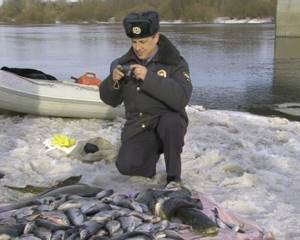
- Networks of any type/type.
- Traps of any design/type (with the exception of crayfish traps).
- Passive fishing gear (approx. - hooks, pokes, etc.) on those rivers that are known for their habitats of salmon species.
- Pneumatic weapons (except for devices intended for underwater hunting).
- Fishing rods/spinning rods of any type, system, design with a total number of hooks - over 10 pieces per person.
- Trawls, bottom seines.
- Hook trap devices.
- Network devices/devices (seines and televisions, drills and capes, scarves, etc.).
- Lifters/scoops with dimensions over 1x1 m and mesh pitch over 10 mm.
- Traps and catfish traps.
- Spears and other piercing tools for fishing.
Don't miss: Ripple Forecast
Prohibited fishing methods - how can you not fish?
- For undercutting and lighting.
- Stunning fish.
- Trolling using a sail and motor with more than 2 baits.
- By means of barriers that become an obstacle to the free movement of fish (dams, etc.).
- Using circles/langes with the number of hooks - over 10 pcs per person.
- Using crayfish traps when their quantity is more than 3 pieces per person, with a mesh size of less than 22 mm and a device diameter of more than 80 cm.
- By sewing with a total number of hooks - over 10 pieces per person.
- Using the diving method or manually wading when catching crayfish.
- On the close.
- Combines and oilseed traps.
- Descent of reservoirs.
- With the installation of huts on ice.
- From ships and other watercraft that have not been properly registered and do not have legal identification marks on board.
- Electric shock and firearms.
- Electric fishing rods.
- Using watercraft during spawning.
- Scuba diving, underwater.
Lures for catching taimen
As for bait, taimen are often not picky, judging by the fact that stones and sticks are often found in its stomach. And if, as you might guess, he swallows stones as a result of attacks on prey at the bottom, then sticks are rather a sign that he doesn’t care what floats on the surface of the water or in its thickness, he is ready to attack everything that floats and is able to fit him into the mouth. But this does not always happen, sometimes taimen becomes very capricious and here you will have to go through almost your entire stock of baits to determine what it really wants. Basically, when choosing lures for taimen, they are guided by the characteristics of depth and current. So, when fishing in deep sections of a river or areas with a fast current, heavy spinners 10-12 cm long are used. And when fishing at shallow and medium depths with a calmer current, large and medium-sized spinners are used. The color of spinners for taimen is selected mainly bright, since it is a rather aggressive predator and such bright colors additionally provoke it to bite. Some fishermen believe that the best spinner for taimen is a brass spinner, and in clear weather it is better to use a polished spinner, and in cloudy weather and at dusk the spinner should be dull and uncleaned. The spinners that are used by local fishermen to catch taimen are spoons:
- spinner “Kola”;
- spinner "Pig"
Rotators:
- Baikal spinner;
- spinner "Kem"
Modern spinners that work great when catching taimen are:
- rotating Blue Fox Supervibrax - used when fishing in deep and calm sections of the river;
- Kuusamo 's rotating Haukilippa with feathered tees also work great;
- spoons such as Kuusamo Rasanen and Professor for fishing fast jets and riffles.
The optimal size of the turntable is No. 6. You can throw such a spoon far and fight with the current. Oscillators are used with an average weight of 26 grams. In addition to spinners, you can use wobblers. The most catchy wobblers for catching taimen are noise wobblers with a diving depth of up to 1 meter. Such wobblers are quite long, exceeding 12 cm in length. Basically, their shape is slanted and narrow.
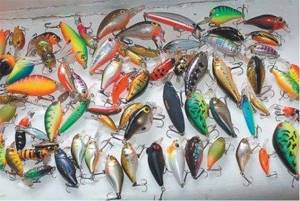
Taimen respond best to spinner baits at medium speed near the bottom. A taimen bite may resemble a hook, but after a few seconds you will feel a powerful jerk that a well-tuned tackle should absorb. When fishing with a wobbler, the game of the bait can be very varied. Even when the wiring is stopped, the wobbler continues to play in the current, thus imitating a live fish, and quite believably. Some of the most catchy wobblers will be:
- Crystal Minnow by Yo-Zuri ;
- minnow - Rapala .
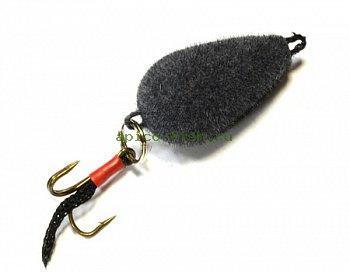
Taimen is also great for poppers. Exotic for catching other fish, but very effective for catching taimen - fishing with an artificial mouse. This method is most effective at night. If this method may seem strange to someone, do not rush to underestimate it - taimen often attacks rats, mice and other living creatures floating in the water. Also, do not forget that he also does not ignore even sticks floating on the surface of the water.
Prohibition on fishing by its length - permissible values
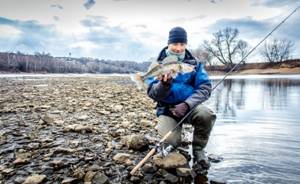
It is worth noting that the length of the fish is measured from the highest point of the snout (approx. with the mouth closed) to the base of the middle rays of the caudal fin. For crustaceans, this value will be equal to the length of the body from the end of the tail plates to the line that connects the middle of the eyes.
If the length of the caught fish is less than acceptable, it must be released “home” with a minimum of damage.
So, the valid values are:
- For carp – 30 cm.
- For crayfish - 9 cm.
- For pike perch – 38 cm.
- For burbot – 40 cm.
- For pike – 32 cm.
- For asp – 35 cm.
- For catfish – 40 cm.
- For chub – 20 cm.
- For carp – 24 cm.
- For vimbe - 22 cm.
- For ramming - 16 cm.
- For grass carp – 45 cm.
- For bream – 17-28 cm (depending on the region).
- For trout – 15 cm.
- For subust – 15 cm.
- For bersh – 25 cm.
- For barbel – 20 cm.
- For herring – 15 cm.
- For silver carp – 50 cm.
Catch rates
The law regulates the maximum permissible mass of prey. For members of the Society of Hunters and Fishers it is 5 kg, for all others - 3 kg. This is the daily norm, but if your stay on the reservoir takes more than 24 hours, it is allowed to exceed the norm twice. A list of prohibited species has been compiled for each fishery.
Additionally, the following characteristics are taken into account:
- the minimum permissible size is regulated for each type of fish;
- weight.
If these parameters are less than acceptable, the prey should be released into its habitat with minimal damage. Most often, these standards are indicated in the fishing permit or in the permit for spearfishing. As an example, it is recommended to familiarize yourself with the data in the table, which shows the permitted fish species.

To measure the length of crustaceans, take the distance from the eyes to the end of the tail plates. This applies to crayfish; amateur crab fishing in Russia is prohibited.
Fishing for bream - the right choice of place, tackle and bait
Ban on fishing based on quantity - acceptable values
In terms of the amount of catch, the law determines the following:
- The catch rate per person/day is 5 kg of fish. In this case, there is only one exception - in the case when the weight of the first fish is higher than the catch norm.
- The norm for exporting fish is no more than double the norm for 2 days of stay (export in any form - salted or dried, smoked and raw).
- There are no restrictions on the catch of bleak, minnows and ruffs.
- The catch rate for crayfish is no more than 30 pieces per person/day.
- is strictly prohibited without a license.
- Bait fishing - no more than 30 live bait per person/day.
Fishing places and types
Fishing rules divide water bodies into two types - public use and cultural fisheries. In the latter, you can catch sport fishing objects, but you must obtain a fishing license. Mining in them is carried out on a paid or free basis. Members of specialized societies may be issued vouchers, which entitles them to preferential conditions.
What crucian carp bites well on: review of bait and cooking recipes

Currently, the following types of fishing exist:
- Amateur. The main sign is that the production will not be used as an object of sale in the future. Each region determines what can be fished with and a ban on activities during the spawning period.
- Sports. The goal is to catch fish of a certain species with maximum weight and size. To do this, they go to the sport fishing site, pre-issue a permit, a fishing ticket, and draw up regulations based on the current legislation.
- Promyslovaya. The peculiarity is the commercial component. The fish goes on sale. The type of prey is determined - red, white or black. After the license is issued, a ban on fishing for other types of fish automatically applies. In this case, it is permitted to catch a permissible minimum amount of a type of fish not specified in the license.
These types of fisheries also differ in the periods of prohibition of activities, fishing rules and the gear used. They are described on the Rosrybolovstvo website, but it is recommended to check the details at the local branch of the organization.
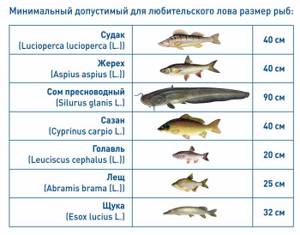
Prohibited fish species - which ones should you not catch?
Lists of prohibited fish are determined individually in each region.
- For example, for Moscow and the Moscow region - trout and sterlet, crayfish with lampreys, bersh and catfish, podust and sabrefish, white-eye, grayling.
- And in the Kama region it is prohibited to catch trout, taimen, Russian sturgeon and sterlet.
- For the entire territory of the Russian Federation there are restrictions on the size of pike and burbot, bream, and pike perch caught.
- There is a strict ban on fishing for pike, pike perch, asp and bream - if they are used as bait.
- There is a categorical ban on catching the following fish: Atlantic sturgeon (listed in the Red Book, the fine for fishing is about 40,000 rubles), large pseudoshovel, Aral salmon (rare species, 1st category of protection), etc.
All punishments and fines for illegal fishing since 2016 in the Russian Federation
For violation of the law on the use of aquatic biological resources, the following penalties and fines are provided:
- For violation of fishing rules and other rules on fishing (Administrative Code Article 8.37 Part 2). Punishment: fine equal to 2000-5000 rubles. for citizens + confiscation of the vessel and fishing devices.
- For catching fish during spawning. Punishment: fine - up to 300,000 rubles.
- For catching carp, carp or pike during spawning. Punishment: fine of 250 rubles. for each individual. For bream – 25 rubles, for crayfish – 42 rubles. If the caught individual is a female, then the amount of the fine increases by 2 times. For each individual of sturgeon species - an additional 100% of the fine amount (for fishing), for each individual of whitefish or salmon - an additional 200% of the fine amount.
- For illegal fishing through the use of prohibited fishing gear , causing damage on a large scale, during (and in places) spawning, in prohibited fishing areas (Article 256 of the Criminal Code of the Russian Federation). Punishment: fine of 100,000-300,000 rubles. for citizens, or arrest for 6 months.
- For destruction/damage of special signs that define the boundaries of specially protected objects, protected areas of water bodies, etc. Punishment: fine equal to 300-500 rubles. for citizens.
- For fishing without a license (if necessary) or in violation of the conditions provided for by the license (Administrative Code Art. 7.11). Punishment: fine equal to 500-1000 rubles. for citizens.
- For the destruction of rare fish species (from the Red Book). Punishment: fine equal to 1000-2000 rubles. for citizens + confiscation of the catch itself and fishing gear.
- For violation of the rules of relocation, acclimatization or hybridization of aquatic biological resources (Administrative Code Art. 8.36). Punishment: fine equal to 1000-1500 rubles. for citizens.
- For violation of navigation rules for ships. Punishment: fine equal to 500-1000 rubles. or deprivation of the right to operate a vessel for up to 1 year.
- For parking a car near a pond. Punishment: fine equal to 3500-4000 rubles. (note: there must be at least 200 m from the water's edge to the car).
- For violation of water use rules during fishing (Administrative Code Art. 8.14 Part 2). Punishment: fine equal to 1500-2000 rubles. for citizens.
If your privacy is violated by control authorities, do not forget that they have the right to find out what the composition of your catch is, the size and types of fish caught. Ask for the employee's identification and be polite. If violations are detected, the inspector of the Fishery Supervision Authority draws up a protocol and issues a fine. Fines are regulated by Chapter 8 of the Administrative Code, Art. 8.37 and art. 8.38, as well as Art. 256 of the Criminal Code of the Russian Federation. For violations of the general rules of fishing, citizens will face fines from 2,000 to 5,000 rubles with confiscation of gear and the vessel. For fishing during the spawning season, or using illegal gear, or causing particularly large damage to natural resources, a fine of up to 500,000 rubles or imprisonment of up to 2 years is imposed.
Spring ban rules: video

